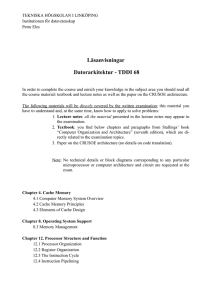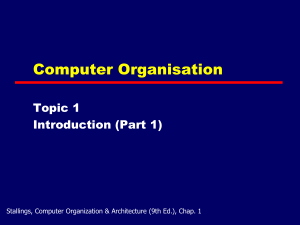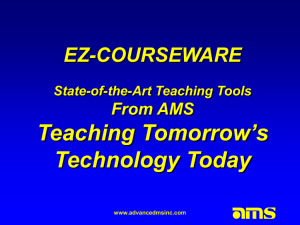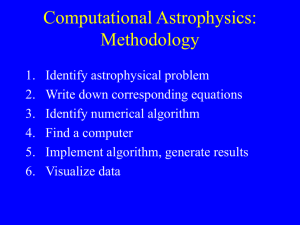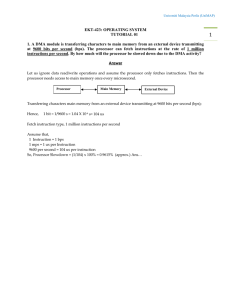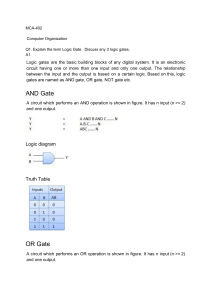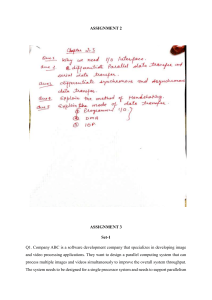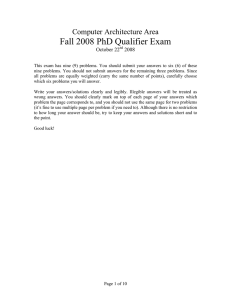Läsanvisningar Datorarkitektur - TDDI03
advertisement
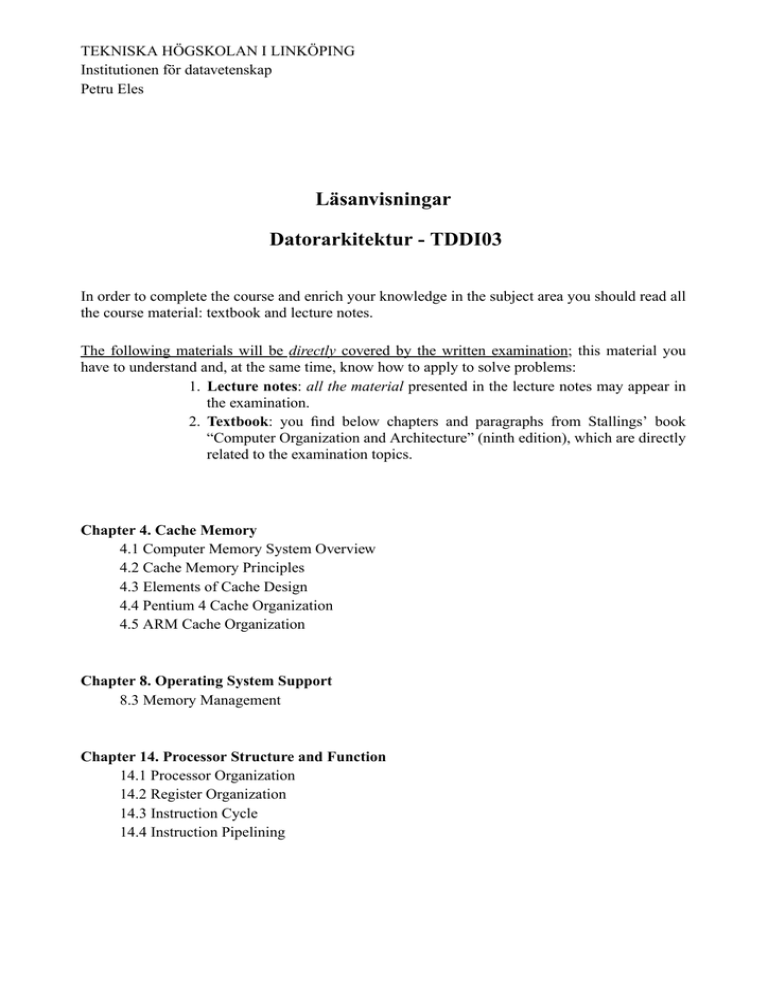
TEKNISKA HÖGSKOLAN I LINKÖPING Institutionen för datavetenskap Petru Eles Läsanvisningar Datorarkitektur - TDDI03 In order to complete the course and enrich your knowledge in the subject area you should read all the course material: textbook and lecture notes. The following materials will be directly covered by the written examination; this material you have to understand and, at the same time, know how to apply to solve problems: 1. Lecture notes: all the material presented in the lecture notes may appear in the examination. 2. Textbook: you find below chapters and paragraphs from Stallings’ book “Computer Organization and Architecture” (ninth edition), which are directly related to the examination topics. Chapter 4. Cache Memory 4.1 Computer Memory System Overview 4.2 Cache Memory Principles 4.3 Elements of Cache Design 4.4 Pentium 4 Cache Organization 4.5 ARM Cache Organization Chapter 8. Operating System Support 8.3 Memory Management Chapter 14. Processor Structure and Function 14.1 Processor Organization 14.2 Register Organization 14.3 Instruction Cycle 14.4 Instruction Pipelining Chapter 15. Reduced Instruction Set Computers 15.1 Instruction Execution Characteristics 15.2 The Use of a Large Register File 15.4 Reduced Instruction Set Architecture 15.5 RISC Pipelining 15.8 The RISC versus CISC Controversy Chapter 16. Instruction Level Parallelism and Superscalar Processors 16.1 Overview 16.2 Design Issues 16.3 Pentium 4 16.4 ARM Cortex-A8 Chapter 17. Parallel Processing 17.1 Multiple Processor Organizations 17.4 Multithreading and Chip Multiprocessors 17.7 Vector Computation (no IBM 3090) Chapter 18. Multicore Computers 18.1 Hardware Performance Issues 18.2 Software Performance Issues 18.3 Multicore Organization 18.4 Intel x86 Multicore Organization 18.5 ARM11 MPCore Don’t forget lecture one!!! There we discussed several issues which are supposed to be known by you from previous courses you have taken. If this is not exactly the case for you, you have to look into one or several of the following chapters: Chapter 2. Computer Evolution and Performance 2.1 A Brief History of Computers 2.2 Designing for Performance Chapter 3. A Top-Level View of Computer Function and Interconnection 3.1 Computer Components 3.2 Computer Function 3.3 Interconnection Structures 3.4 Bus Interconnection Chapter 5. Internal Memory 5.1 Semiconductor Main Memory Chapter 6. External Memory 6.1 Magnetic Disk 6.3 Solid State Drives 6.4 Optical Memory 6.5 Magnetic Tape Chapter 7. Input/output 7.1 External Devices 7.2 I/O Modules 7.3 Programmed I/O 7.4 Interrupt-Driven I/O 7.5 Direct Memory Access 7.6 I/O Channels and Processors Chapter 12. Instruction Sets: Characteristics and Functions 12.1 Machine Instruction Characteristics 12.2 Types of Operands 12.4 Types of Operations Chapter 13. Instruction Sets: Addressing Modes and Formats 13.1 Addressing Modes 13.3 Instruction Formats The maximal number of points for the exam will be 40. In order to pass the exam you have to collect a total of minimum 21 points.
